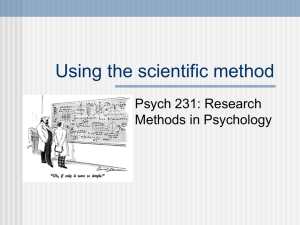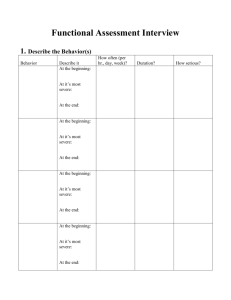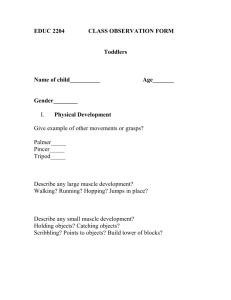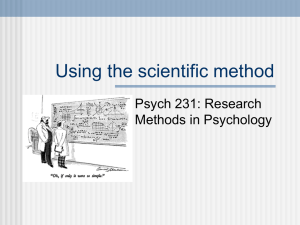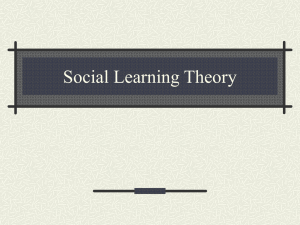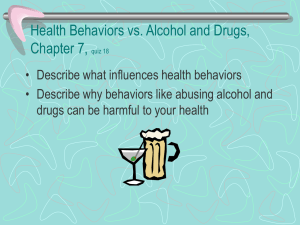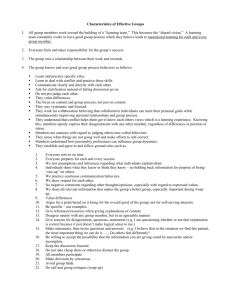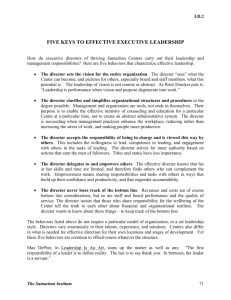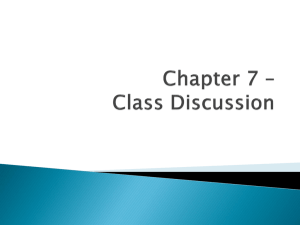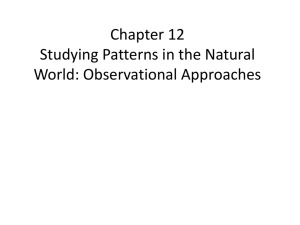Theories & Hypotheses - the Department of Psychology at Illinois
advertisement
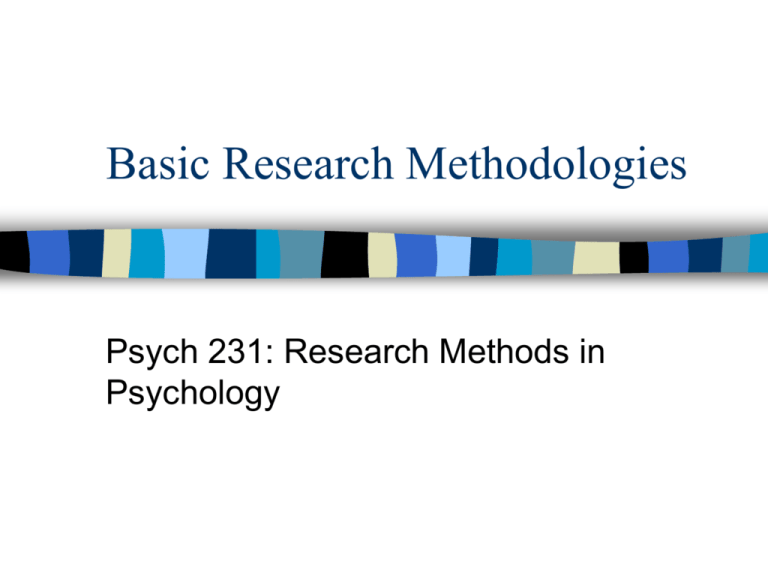
Basic Research Methodologies Psych 231: Research Methods in Psychology Announcements Exam 1: Sept 22 (a week from Wednesday) Using theories in research Induction – reasoning from the data to the general theory Deduction – reasoning from a general theory to the data The chicken or the egg? Theory induction deduction Data Typically good research programs use both Research Approaches Basic (pure) research - tries to answer fundamental questions about the nature of behavior Applied research – Theory sometimes takes a backseat. This is research designed to solve a particular problem Research Approaches Think of this is as a continuum rather as two separate categories. Basic research Applied research • Often applied work may bring up some interesting basic theoretical questions, and basic theory often informs applied work. An example Claim: People perform best with 8 hours of sleep a night. How might we go about trying to test this claim? – How should we test it (what methods)? – What are the things (variables) of interest? – What is the hypothesized relationship between these variables? General research approaches Descriptive: – Observational – Survey – Case studies Correlational Experimental Observational methods The researcher observes and systematically records the behavior of individuals – Naturalistic observation – Participant observation – Contrived observation Naturalistic observation Observation and description of behaviors within a natural setting – Can be difficult to do well – Good for behaviors that don’t occur (as well) in more controlled settings Naturalistic Observation Observation and description of behaviors within a natural setting – Can be difficult to do well – Good for behaviors that don’t occur (as well) in more controlled settings – Often a first step in the research project Participant Observation The researcher engages in the same behaviors as those being observed – May allow observation of behaviors not normally accessible to outside observation – Internal perspective from direct participation • But could lead to loss of objectivity – Potential for contamination by observer Contrived observation The observer sets up the situation that is observed – Observations of one or more specific variables made in a precisely defined setting – Much less global than naturalistic observations – Often takes less time – However, since it isn’t a natural setting, the behavior may be changed Observational methods Advantages – may see patterns of behaviors that are very complex and realized on in particular settings – often very useful when little is known about the subject of study – may learn about something that never would have thought of looking at in an experiment Observational methods Disadvantages – Causality is a problem – Threats to internal validity because of lack of control • Every confound is a threat • Lots of alternative explanations – Directionality of the relationship isn’t known – Sometimes the results are not reproducible Survey methods Widely used methodology Can collect a lot of data Done correctly, can be a very difficult method Doesn’t provide clear cause-effect patterns Case Histories Intensive study of a single person, a very traditional method Typically an interesting (and often rare) case This view has a number of disadvantages – There may be poor generalizabilty – There are typically a number of possible confounds and alternative explanations Correlational Methods Measure two (or more) variables for each individual to see if the variables are related Used for: – Predictions – Reliability and Validity – Evaluating theories Problems: Can’t make casual claims Causal claims We’d like to say: – variable X causes variable Y To be able to do this: – The causal variable must come first – There must be co-variation between the two variables – Need to eliminate plausible alternative explanations Causal claims Directionality Problem: – Airplanes and coffee spills – Happy people sleep well • or is it that sleeping well when you’re happy? Third variable problem: – Do Storks bring babies? • A study reported a strong positive correlation between number of babies and stork sightings Theory 1: Storks deliver babies Theory 2: underlying third variable The experimental method Manipulating and controlling variables in laboratory experiments Must have a comparison – At least two groups (often more) that get compared – One groups serves as a control for the other group Variables – Independent variable - the variable that is manipulated – Dependent variable - the variable that is measured – Control variables - held constant for all participants in the experiment The experimental method Advantages – – – – Precise control possible Precise measurement possible Theory testing possible Can make causal claims The experimental method Disadvantages – Artificial situations may restrict generalization to “real world” – Complex behaviors may be difficult to measure Next time Ethics in research Read chapter 3
